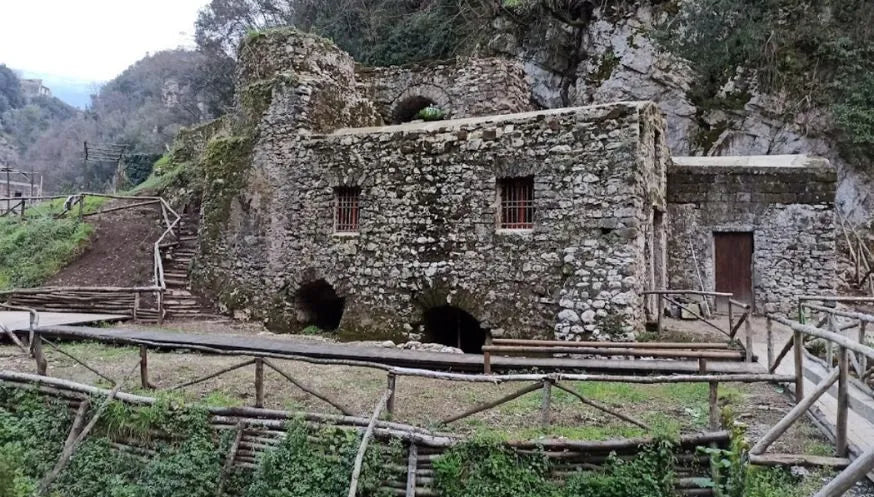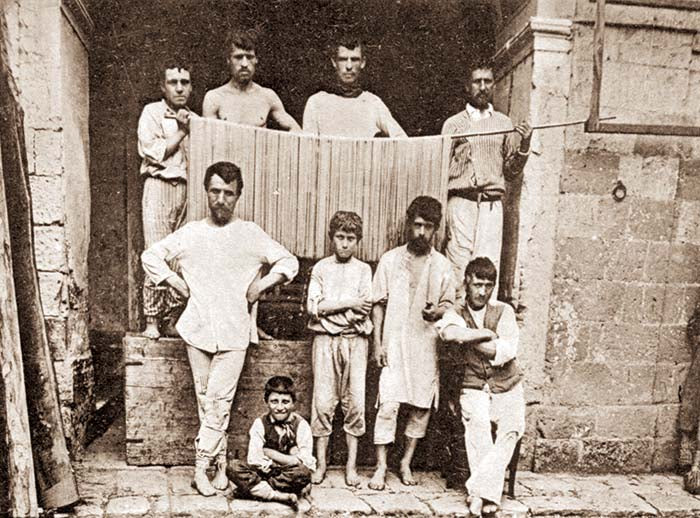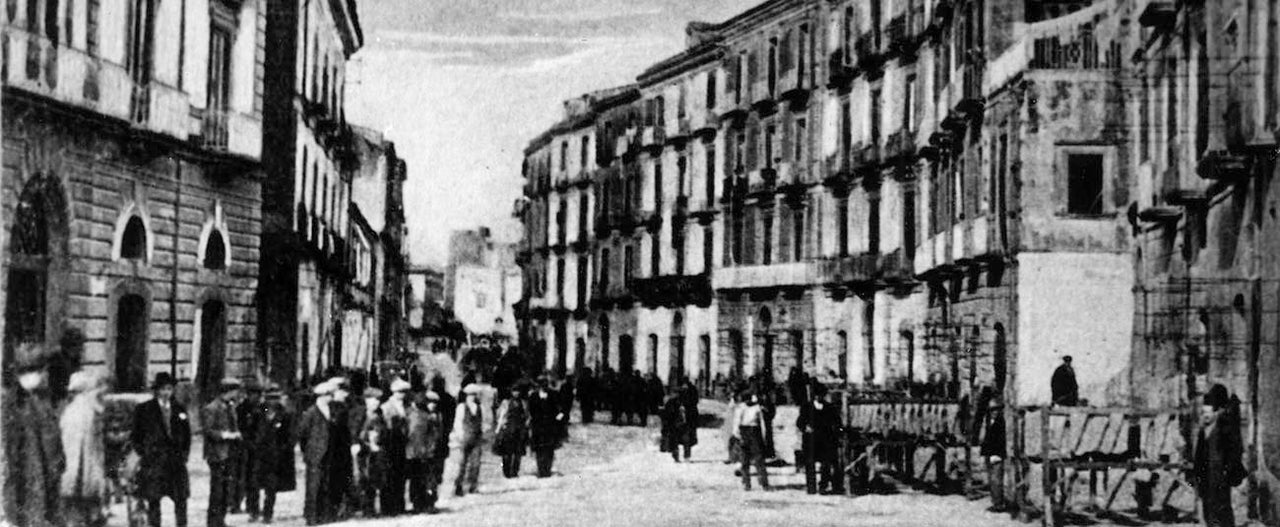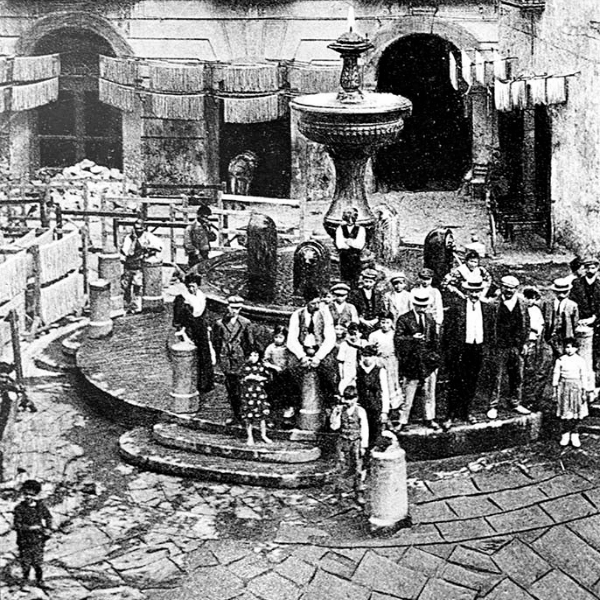Nel cuore del Regno di Napoli, si cela la Valle dei Mulini di Gragnano dove la storia della produzione pastaia affonda le sue radici nel lontano 1600.
Qui, il Monastero di San Nicola dei Miri commissionò la costruzione di un mulino lungo il torrente Vernotico, poi conosciuto come il "Molino delle Monache," che divenne in seguito noto come il "Molino Lo Monaco."

Nel 1703, il 3 luglio, il mulino "Lo Monaco" venne concesso in locazione e, in seguito, venduto a Giambattista Di Nola, un imprenditore di talento la cui storia si intreccerà poco più avanti con quella della famiglia Iozzino.
Il 2 settembre 1797, il mulino passò nelle mani di Serafina Di Nola e di suo marito Marcantonio Iozzino che, con il supporto dei loro quattro figli - Ferdinando, Luigi, Carlo ed Antonio - decisero di intraprendere l'attività di produzione della pasta, segnando l'inizio di un'avventura straordinaria.

Il 7 aprile 1840, un altro capitolo fondamentale venne scritto quando Tommaso Iozzino, figlio di Ferdinando Iozzino, riacquistò per 400 ducati le quote del mulino "Lo Monaco," che nel frattempo erano state vendute dagli zii, diventando proprietario del mulino insieme a suo padre Ferdinando e allo zio Carlo.
Nel 1846, Tommaso Iozzino aprì il suo opificio per la produzione di pasta secca artigianale in Via San Marco, nel cuore di quella che divenne presto nota come la "via della pasta", oggi chiamata Via Roma.

1 luglio 1851 Tommaso Iozzino eredita le quote del mulino “Lo Monaco” dal padre Ferdinando e dallo zio Carlo divenendone proprietario esclusivo.
Lo venderà successivamente per 5900 ducati, continuando però a produrre pasta in Via San Marco insieme al figlio Ferdinando.
Nel 1907, Tommaso Iozzino, omonimo di suo nonno, diversificò ulteriormente le attività di famiglia e avviò un'attività imprenditoriale nel settore della frutta secca in Piazza Paride Del Pozzo. Questa attività venne poi portata avanti dal nipote, Zenone Tommaso Iozzino, figlio di suo fratello Emilio.

Nel 1920, Ferdinando Iozzino e altri due imprenditori gragnanesi costituirono il “Pastificio La Gragnanese” e trasferirono lo storico pastificio da Via San Marco a Via Santa Caterina, la loro attività durò circa 10 anni.

Ma la storia non finisce qui. Il 7 giugno 2018, due fratelli, Tommaso e Domenico Iozzino, già impegnati nel settore della frutta secca, in un’attività portata avanti da ormai quattro generazioni, ripresero l'attività di produzione di pasta secca artigianale avviata oltre due secoli prima dalla loro famiglia.
Così, la tradizione e la passione per la pasta artigianale hanno attraversato generazioni, segnando profondamente la storia di Gragnano e contribuendo al prestigio del pastificio.
I loro prodotti, come i Mezzani, Vermicelli, Zita, Occhi di Elefante, Maccaroncelli, Lingue di Passero e Fusilli fatti a mano, continuano a incantare i palati in Italia e nel mondo, portando avanti una tradizione di qualità che ha resistito alla prova del tempo.
Nel cuore del Regno di Napoli, si cela la Valle dei Mulini di Gragnano dove la storia della produzione pastaia affonda le sue radici nel lontano 1600.
Qui, il Monastero di San Nicola dei Miri commissionò la costruzione di un mulino lungo il torrente Vernotico, poi conosciuto come il "Molino delle Monache," che divenne in seguito noto come il "Molino Lo Monaco."
Nel 1703, il 3 luglio, il mulino "Lo Monaco" venne concesso in locazione e, in seguito, venduto a Giambattista Di Nola, un imprenditore di talento la cui storia si intreccerà poco più avanti con quella della famiglia Iozzino.
Il 2 settembre 1797, il mulino passò nelle mani di Serafina Di Nola e di suo marito Marcantonio Iozzino che, con il supporto dei loro quattro figli - Ferdinando, Luigi, Carlo ed Antonio - decisero di intraprendere l'attività di produzione della pasta, segnando l'inizio di un'avventura straordinaria.


Il 7 aprile 1840, un altro capitolo fondamentale venne scritto quando Tommaso Iozzino, figlio di Ferdinando Iozzino, riacquistò per 400 ducati le quote del mulino "Lo Monaco," che nel frattempo erano state vendute dagli zii, diventando proprietario del mulino insieme a suo padre Ferdinando e allo zio Carlo.
Nel 1846, Tommaso Iozzino aprì il suo opificio per la produzione di pasta secca artigianale in Via San Marco, nel cuore di quella che divenne presto nota come la "via della pasta", oggi chiamata Via Roma.
1 luglio 1851 Tommaso Iozzino eredita le quote del mulino “Lo Monaco” dal padre Ferdinando e dallo zio Carlo divenendone proprietario esclusivo.
Lo venderà successivamente per 5900 ducati, continuando però a produrre pasta in Via San Marco insieme al figlio Ferdinando.
Nel 1907, Tommaso Iozzino, omonimo di suo nonno, diversificò ulteriormente le attività di famiglia e avviò un'attività imprenditoriale nel settore della frutta secca in Piazza Paride Del Pozzo. Questa attività venne poi portata avanti dal nipote, Zenone Tommaso Iozzino, figlio di suo fratello Emilio.
Nel 1920, Ferdinando Iozzino e altri due imprenditori gragnanesi costituirono il “Pastificio La Gragnanese” e trasferirono lo storico pastificio da Via San Marco a Via Santa Caterina, la loro attività durò circa 10 anni.

Ma la storia non finisce qui. Il 7 giugno 2018, due fratelli, Tommaso e Domenico Iozzino, già impegnati nel settore della frutta secca, in un’attività portata avanti da ormai quattro generazioni, ripresero l'attività di produzione di pasta secca artigianale avviata oltre due secoli prima dalla loro famiglia.
Così, la tradizione e la passione per la pasta artigianale hanno attraversato generazioni, segnando profondamente la storia di Gragnano e contribuendo al prestigio del pastificio.
I loro prodotti, come i Mezzani, Vermicelli, Zita, Occhi di Elefante, Maccaroncelli, Lingue di Passero e Fusilli fatti a mano, continuano a incantare i palati in Italia e nel mondo, portando avanti una tradizione di qualità che ha resistito alla prova del tempo.
